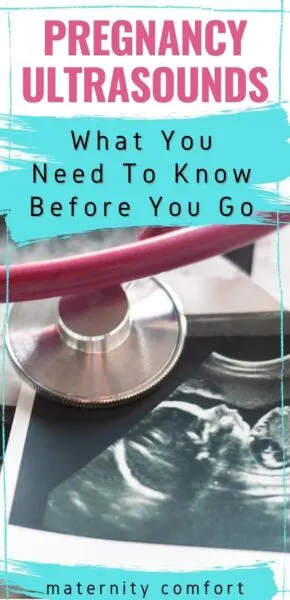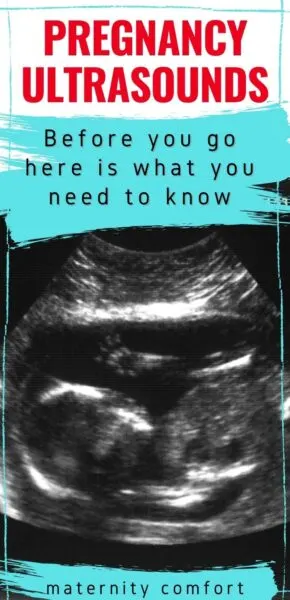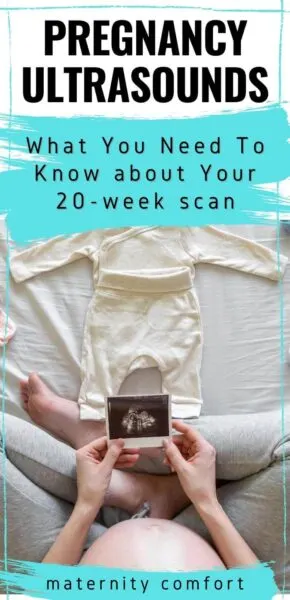Updated August 3, 2022
Are you wondering what screening ultrasounds during pregnancy are for?
You are not alone!
What exactly is your OB/GYN or Midwife looking for during a pregnancy ultrasound?
I found screening ultrasounds during pregnancy nerve-wracking and anxiety-producing.
Even as a nurse, I wasn’t exactly sure what to expect or what my Doctor was looking for.
Maybe you feel the same way.
It is normal to be excited and nervous about ultrasounds during pregnancy.
We want to help calm your nerves so we asked our OB/GYN, Doug Penta, MD to explain what doctors and midwives are looking for during ultrasounds.
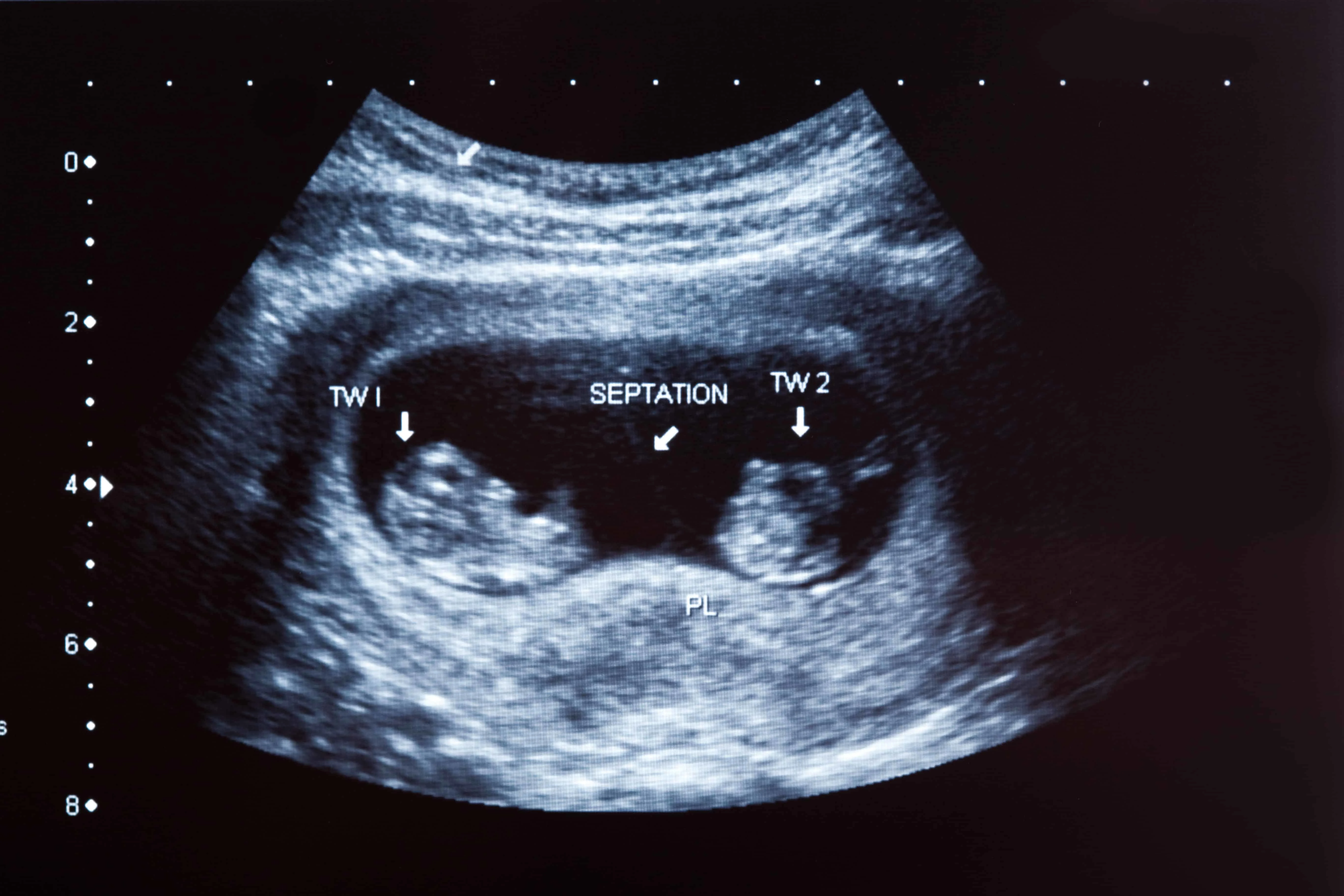
What Every Pregnant Woman Should Know About Screening Ultrasounds:
1. Screening ultrasounds confirm your due date:
Though a 1st-trimester ultrasound is most accurate at confirming your due date, second-trimester screening ultrasounds can also help confirm the accuracy of your due date or EDC (estimated date of confinement).
Establishing your due date based on your last menstrual period is most accurate if your menstrual cycle is regular and ovulation occurs at midcycle.
However, if you have an irregular menstrual pattern (delayed ovulation, etc.) your due date based on the first day of your last menstrual period may not be correct.
A very rough rule-of-thumb regarding the accuracy of ultrasound for dating your pregnancy is as follows:
1st Trimester Ultrasound is accurate to within 1 week
2nd Trimester Ultrasound is accurate to within 2 weeks
3rd Trimester Ultrasound is accurate to within 3 weeks
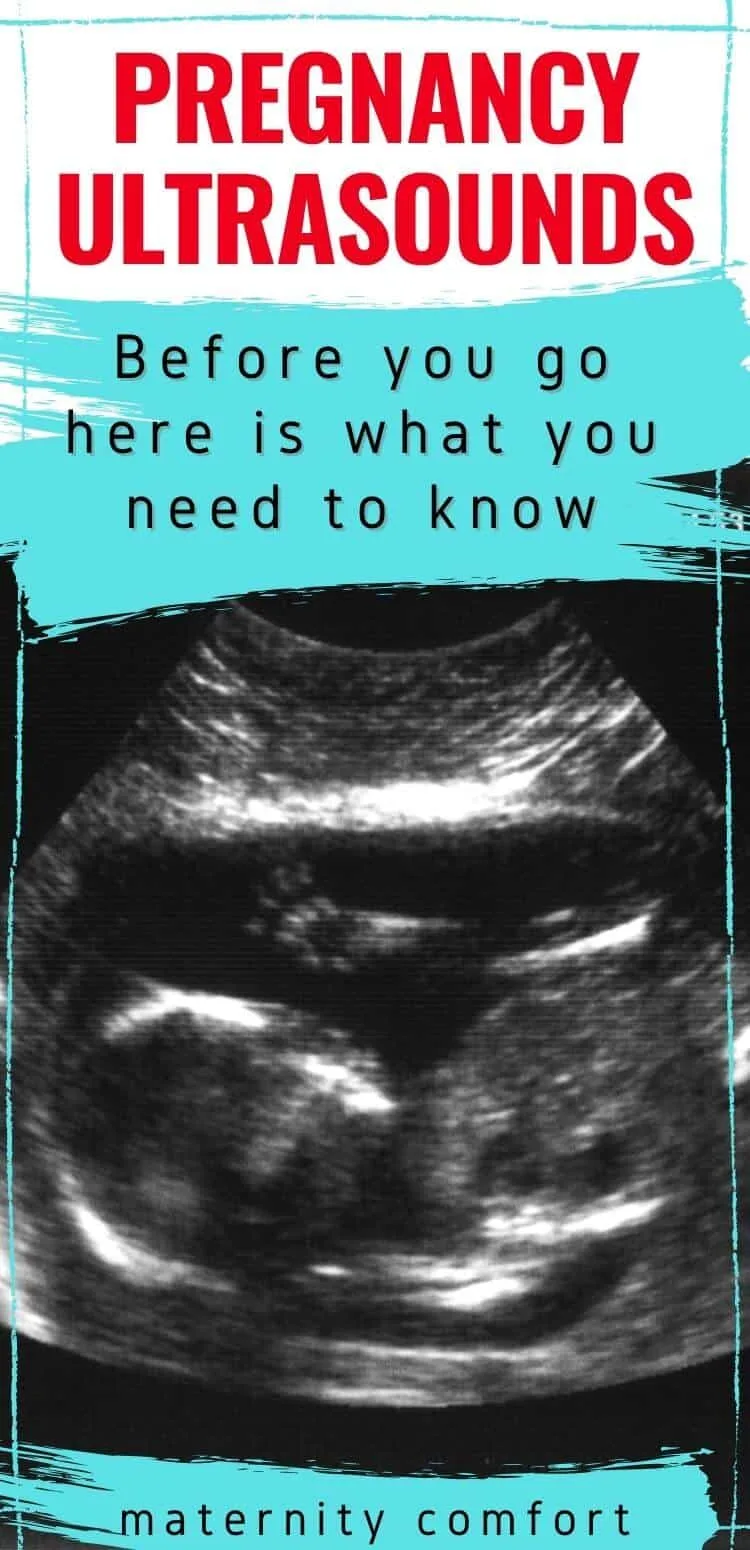
Why is ultrasound less accurate as your pregnancy advances?
It is because an early ultrasound shows significant changes over one week. An ultrasound that is done later in pregnancy measures changes that are subtle from one week to the next.
- A 1st-trimester ultrasound uses the crown-rump length of the developing embryo. This measurement shows significant changes from one week to the next.
- A 3rd-trimester ultrasound uses measurements of a fully developed fetus. These changes do not change significantly from one week to the next.
***It is also important to note that the accuracy of an ultrasound depends on the quality of the imaging and the experience of the ultrasonographer.
An easy way to get an estimate of your due date is to simply subtract 3 months from your last menstrual period and add 7 days. (This is based on a regular 28-day menstrual cycle.)
 Triple Sonogram Pregnancy Keepsake Frame
Triple Sonogram Pregnancy Keepsake Frame
2. Detects Abnormal Placental Location (Placenta Previa)
Knowing the location of the placenta can be extremely important during your pregnancy for a number of reasons:
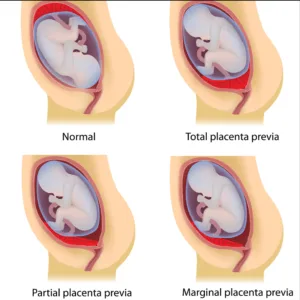
TYPES OF PLACENTA PREVIA
If you have a placenta previa (placenta overlying the cervix), it is important to know.
This condition can result in painless vaginal bleeding, especially during the 3rd trimester.
There is no question that knowing you have a placenta previa (Complete, Partial, or Marginal) can be invaluable information to prevent hemorrhage and guide your doctor or midwife during the 3rd trimester in preparation for delivery.
>>The importance of diagnosing a placenta previa cannot be overstated<<
The last thing your prenatal care provider would want to do is examine your cervix if you have a placenta previa.
A cervical exam can result in heavy vaginal bleeding.
Intercourse must also be avoided if a placenta previa is identified on ultrasound.
3. Singleton versus Multiple Gestation
When ultrasound became available, the days of being surprised by a twin pregnancy at the time of delivery essentially ended.
When I first started practice, this “story” was not unusual and was quite shocking for the expectant parent or couple at the time of delivery.
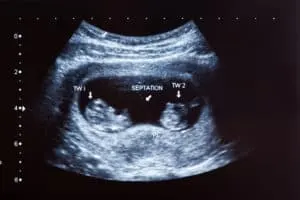
ULTRASOUND OF TWINS
This being said, the clinical findings of multiple gestation pregnancies are usually apparent by 20 weeks based on the uterine size being far greater than that of a singleton pregnancy.
As a general rule, a singleton pregnancy will measure 20 cms at twenty weeks, with the uterus palpated at the level of the umbilicus.
A significant deviation from this (2 to 3 cms) should prompt an ultrasound evaluation to establish twins, triplets, etc..).
Once again, this information is extremely helpful to know as early in the pregnancy as possible.
Furthermore, knowing if the twins are in separate gestational sacs, etc. is crucial for optimal prenatal management.
If you have been diagnosed with twins, consider a maternity support belt as your pregnancy advances!
If you are having twins or triplets, the time will come when you will likely be looking for a maternity support belt.
The weight of twins or triplets can strain your back and pelvic joints. Low back pain and sciatic pain are not uncommon during pregnancy… even with a singleton pregnancy.
*Discuss using a pelvic support belt with your provider to be sure you can use one as your pregnancy advances.
You may not want to purchase one too early, but keep in mind the shipping delays as a result of the current pandemic.
4. Gender Determination
Though gender determination is exciting for expectant parents (who want to know the gender) this finding can also be clinically useful if there is a sex-linked genetic disorder in the family (ie hemophilia).
Knowing gender can immediately resolve some concerns when it comes to sex-linked genetic disorders. If necessary further genetic preparation for neonatal management.
As noted above, gender determination in itself can be an exciting revelation as evidenced by the popular gender reveal parties that are now as popular as baby showers.
Though gender can be determined by ultrasound, there is a small chance the findings could be incorrect.
Gender determination can be difficult if your baby is not in the right position or is too active!
Usually, ultrasonographers will let you know if they are certain about the gender.
If you are given a gender picture at the time of the exam you can feel fairly certain the findings are correct.
(The experience of the ultrasonographer and quality of equipment ultimately.)
Should genetic testing be required to screen for an inherited disorder, the gender will be determined based on the chromosomes in the amniotic fluid.
5. Fluid Level
An ultrasound is a very useful way to measure the amniotic fluid around your baby. This information can represent different concerns depending on the gestational age of your pregnancy.
The measurement of amniotic fluid is another useful piece of information obtained during screening ultrasounds.
Low amniotic fluid is called oligohydramnios and can be seen with impaired placental function.
Increased amniotic fluid is called polyhydramnios and can be seen with diabetes during pregnancy, congenital anomalies.

Dark Area Is Amniotic Fluid
6. Short Cervical Length or Preterm Dilated Cervix
Screening ultrasounds have created a large database of information about the cervix.
These often incidental findings can show anatomic changes that can help predict the risk of preterm delivery.
I mention this parameter simply because incidental findings such as this will continue to accrue as data is collected and these findings can be clinically significant when it comes to the prospective management of your pregnancy.
7. Uterine Abnormalities (congenital malformations, fibroids, etc.)
The prevalence of uterine structural abnormalities (be it fibroids or congenital malformations) is not uncommon and if not symptomatic, these structural differences which could impact pregnancy management will often go undiagnosed.
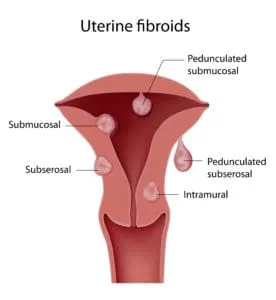
UTERINE FIBROIDS
Once again, the question is simply whether it is helpful to know the information of this nature when it comes to the management of your pregnancy.
There are those who might say “what you don’t know won’t hurt you” and though this may often be the case, the expression also comes to mind that “knowledge is power” or in this case can be instrumental in preventing pregnancy complications.
In addition to fibroids, uterine structural congenital anomalies, such as a bicornuate uterus may be found.
A bicornuate uterus can predispose to premature delivery and management can be affected if this finding is noted.
8. Serious Abnormalities That May Require Early Intervention
Though rare, I have seen incidental findings of concern on more than one occasion over the past 20 years. Abnormalities such as a molar pregnancy.
A molar pregnancy can give a “snowstorm” appearance on ultrasound and be either partial or complete. Molar tissue can be cancerous.
Fortunately, molar pregnancies respond well to chemotherapy, often with complete remission.
This is just one example of early detection leading to early intervention.
On physical exam (during your prenatal course) a molar pregnancy will often become clinically apparent.
However, this will not be apparent until the uterine size measures larger than the expected gestational age. (I want to reiterate that this condition is “rare” but not insignificant if it is you who is being affected by this medical condition.
9. Clinical Management Decisions
The management of your pregnancy can be affected base on information obtained from screening ultrasounds.
The following, are just a few examples:
- Decisions about intervention based on gestational age (prematurity or post dates)
- Determination of fetal growth abnormalities requiring antepartum management
- Delivery plans based on abnormal placental location (placenta previa)
10. Piece Of Mind
Though this list is not all-inclusive as to the benefits of screening ultrasounds, it is intended to explain how valuable the test can be during the early stages of your prenatal care.
Most important for an expectant mother or couple is the “peace of mind” screening ultrasounds can offer.
To simply know there are no major abnormalities identified on screening ultrasounds also reduces the possibility of finding a significant prenatal concern during the later stages of your pregnancy.
Summary of what a screening ultrasound can do for you:
Diagnose:
- Placenta Previa and other forms of abnormal placentation (Placenta Accreta, Abruption, Twin Placenta abnormalities, etc.)
- Fibroids can be seen on screening ultrasounds
- Fetal Malformations and Syndromes
- Complications relating to Gestational Diabetes
- Gender determination (Hemophilia risk etc.)
- Confirm Due Date (this can be important to be certain of a diagnosis of preterm labor and post date management)
- Rare but serious pregnancy abnormalities (ie. molar pregnancy)
Related: How To Prevent Swelling During Pregnancy
Register and Receive a FREE Welcome Box
*For Prime Members Only While Supplies Last!
Frequently asked questions:
1. How many weeks can they do an ultrasound to confirm pregnancy?
Pregnancy can be confirmed by ultrasound if there is a gestational sac identified in the uterine cavity. This ultrasound finding can first be seen by (transvaginal ultrasound) between 3 and 5 weeks pregnant. The gestational sac is 2 to 3 mm in size at this time.
2. How many weeks can an ultrasound confirm a viable pregnancy?
Transvaginal ultrasound can confirm a viable pregnancy between 5 and 6 weeks if a beating heartbeat can be seen in the intrauterine gestational sac.
3. When should you see something in the gestational sac?
Week five is when the first visible structure (the yolk sac) can be seen within the gestational sac.

